Everyone is unique — and no matter your age, background or physical limitations, there’s an opportunity for everyone to find creative solutions to exercise.
To spotlight movement and physical therapy, Maury Regional Health wants to share the benefits of how exercising supports long-term health, such as improved heart health, stronger bones and muscles, greater mobility, better brain health, improved mood, better sleep, lowering risk for cancer and, later in life, reducing the risk of falls.
Healthy aging involves a range of self-care that involves physical, mental and cognitive health. As we age, it’s easy to recognize how our bodies don’t move like they used to; however, it’s important to continue to move to the best of your ability for an endless list of health benefits.
Why would someone exercise in a chair?
Everyone’s body is unique — each with their own capabilities and limitations. There are situations, whether temporary or long-term, that may require some individuals to need creative solutions for gentler forms of exercise, such as exercising in a chair. These reasons include but are not limited to:
- Limited mobility: People with conditions such as arthritis, joint pain or injuries that restrict movement
- Post-surgery recovery: After surgeries, particularly joint replacements and other orthopedic surgeries, patients often need non-weight bearing activities
- Chronic health conditions: People with chronic health conditions and pain require low-impact activities to avoid placing too much stress on their bodies, which would have the opposite effect of the goals of exercise
- Balance issues: Patients with balance issues, including seniors, can reduce their risk of falls
- Weakness or fatigue: Like patients with chronic health conditions, gentle movement and exercise is ideal to prevent overexertion for those dealing with weakness or fatigue
- Rehabilitation: After strokes or neurological conditions, chair exercises add support to patients rebuilding their coordination
- Seniors: As people age, high-impact exercise becomes more difficult, meaning chair exercises are beneficial and prevent falls
- Obesity: Obese individuals can often face discomfort or limitations with traditional exercise, making chair exercises accessible and supportive
- Office workers: Individuals in desk jobs are required to sit for prolonged periods of time, making chair exercises a great way to keep strong and stretch throughout the workday
- Pregnancy: Since their bodies are changing quickly and many want safe exercises for their baby, chair exercises are beneficial, especially in later stages of pregnancy
In these and in many other cases, chair exercises can help maintain or improve strength, flexibility and overall quality of life.
How to exercise in a chair
While most medical professionals encourage as much movement as possible for greater health and healthy aging, there are some considerations around movement to be aware of, like proper lifting techniques. Moving, lifting and exercising properly helps build strength and flexibility safely, preventing injury or unknown long-term damage.
Here are some chair exercises that support the legs, glutes, core, back, arms, shoulders and chest.
Long Arc Quad
.png)
- Targets: Legs
- Instructions: Sit up straight with your feet flat on the ground. Slowly extend one leg until it’s straight, flexing the thigh muscles, and hold briefly. Lower back down with control. Repeat on the other leg.
Seated Hip Abduction
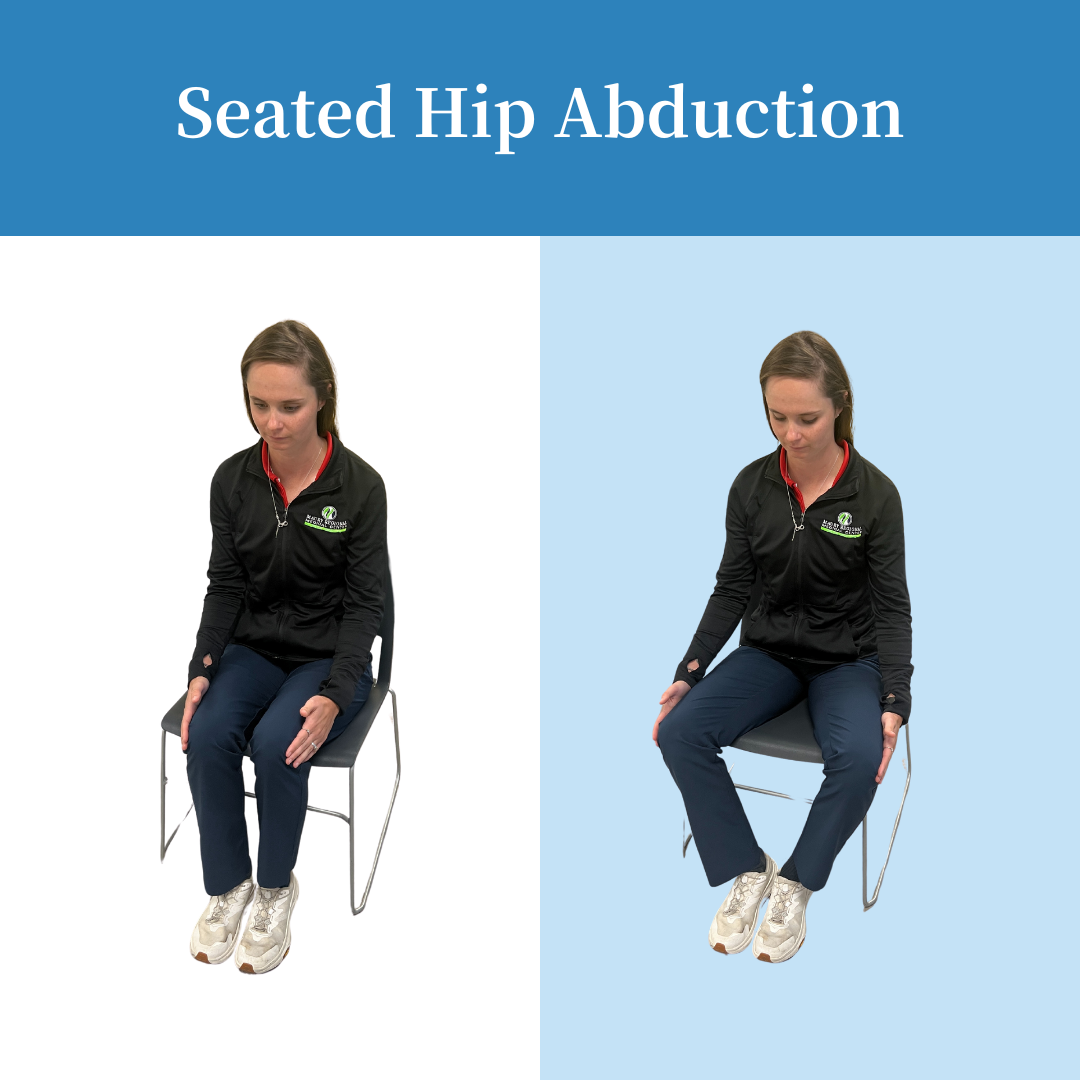
- Targets: Glutes
- Instructions: While seated, place a resistance band around your knees (optional). Slowly move your knees outward, keeping your feet together and engaging the outer hip muscles. Hold briefly, then bring knees back together.
Seated Marches
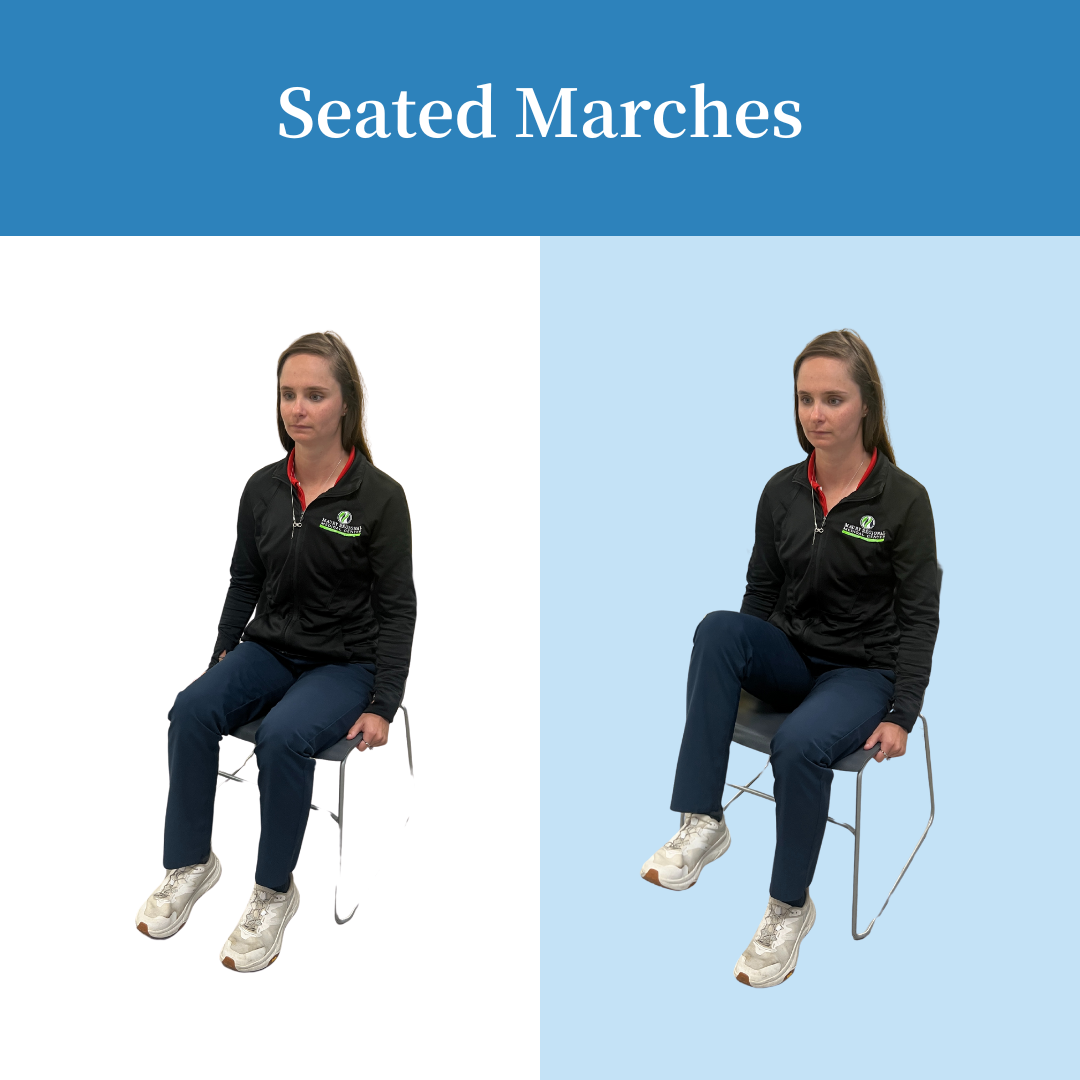
- Targets: Legs
- Instructions: Sit tall with both feet flat on the floor. Lift one knee toward your chest, engaging your core, and lower it back down. Alternate lifting each knee in a marching motion.
Thoracic Spine Rotation
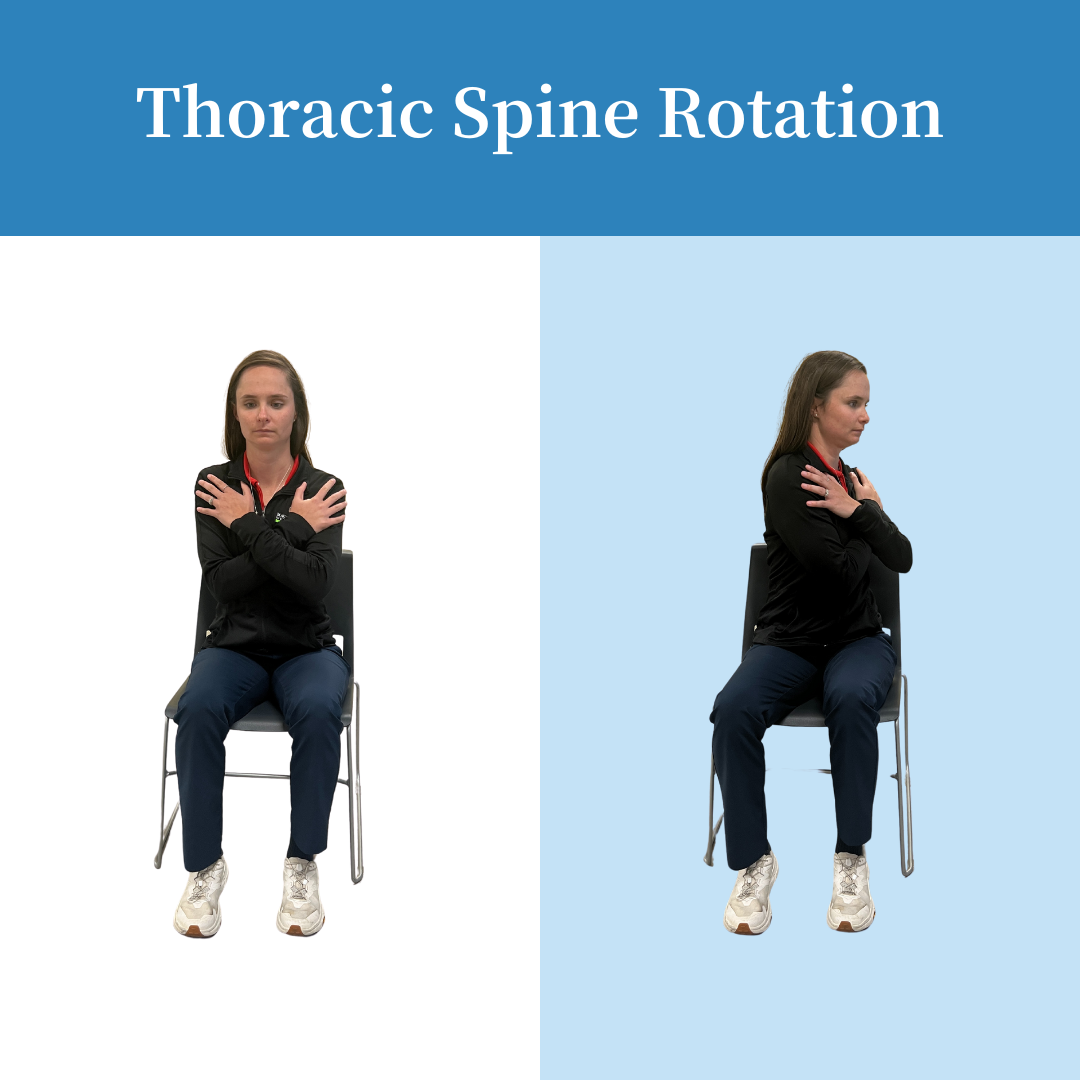
- Targets: Back
- Instructions: Sit upright with your hands gently clasped in front of your chest. Twist your upper body to one side, engaging your core, then return to the center. Alternate sides to stretch and mobilize the upper back.
Sit to Stand
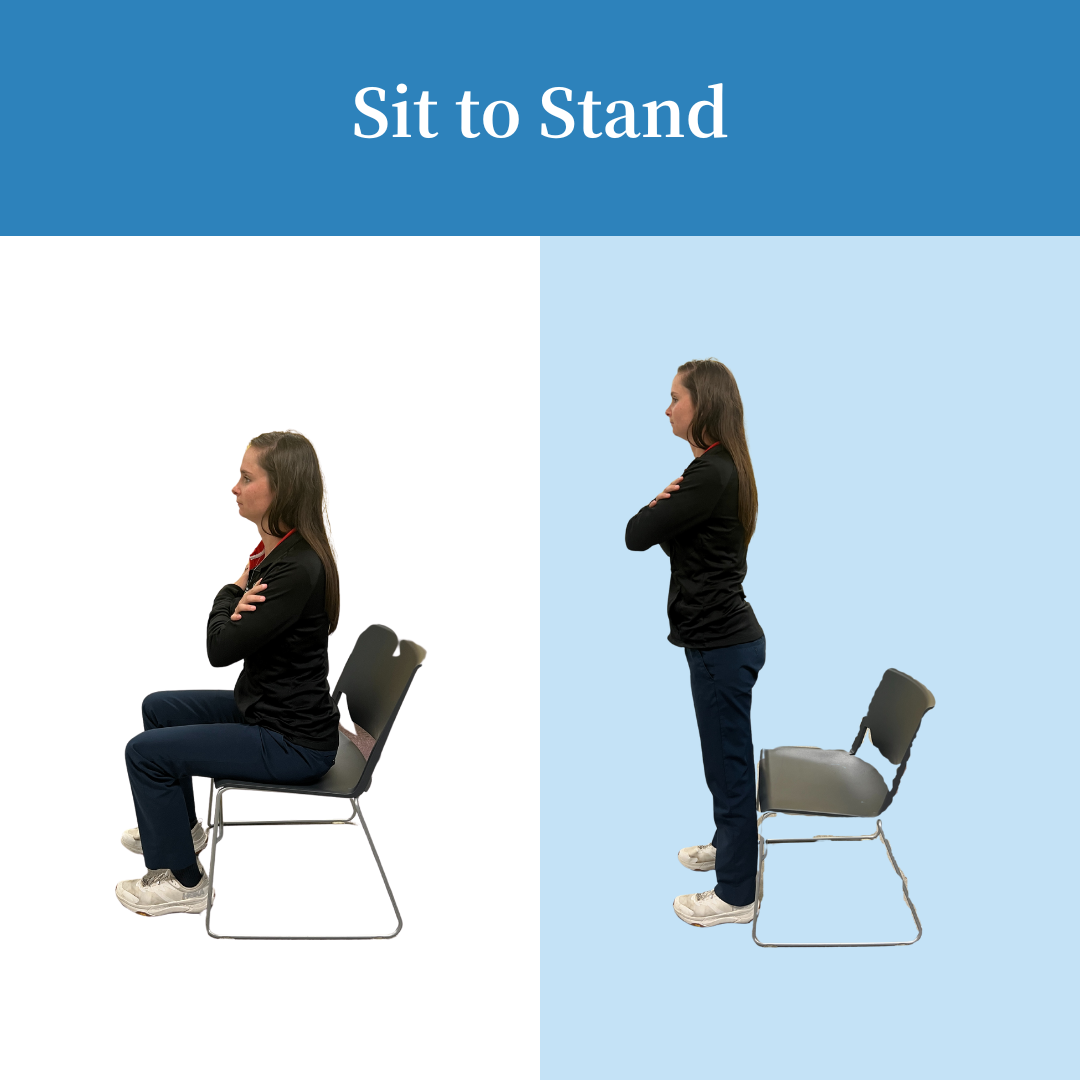
- Targets: Core, glutes and legs
- Instructions: Sit toward the front of your chair with feet hip-width apart. Lean forward slightly, pressing through your heels to stand up. Slowly sit back down with control, using your legs, not your hands, if possible.
Scapula Retraction
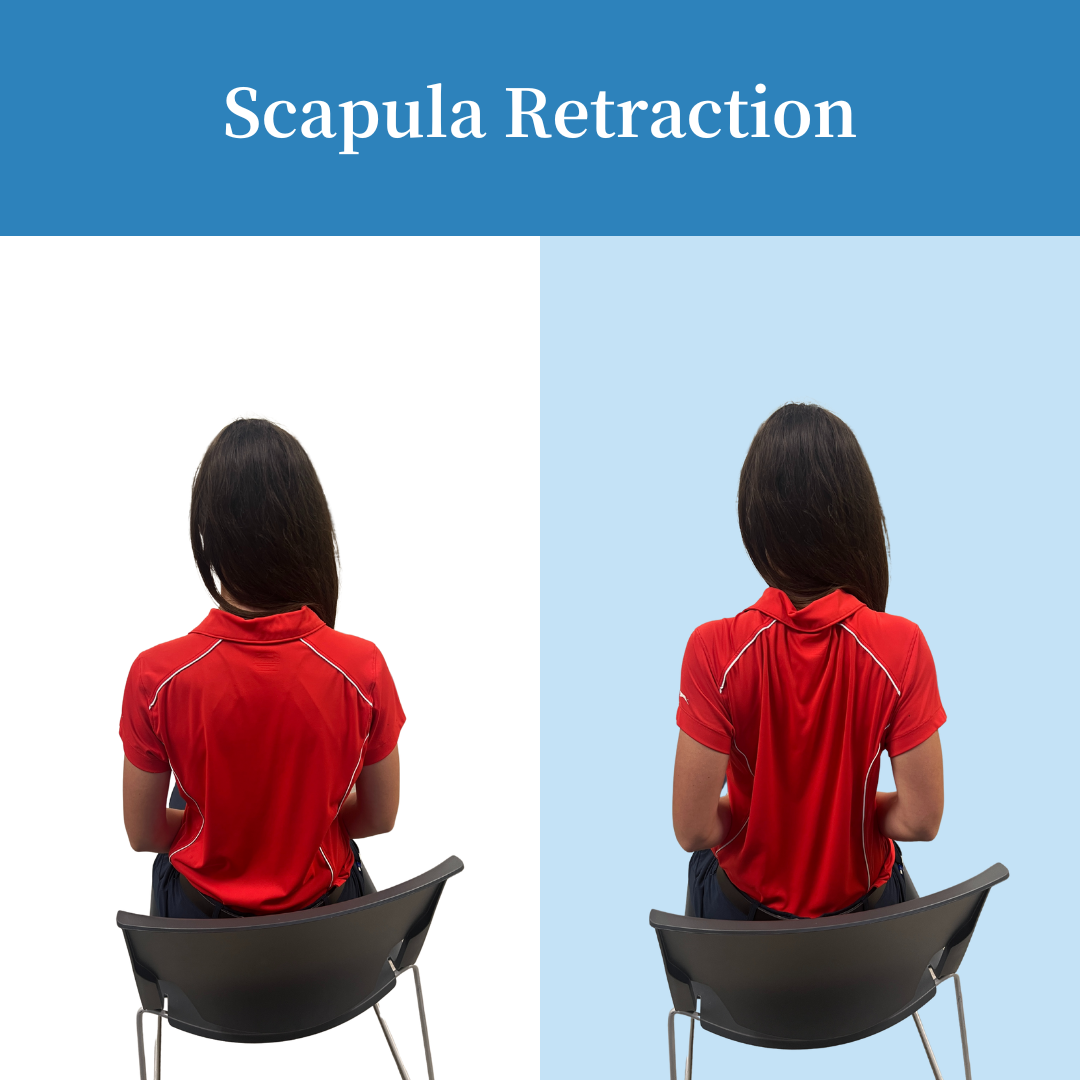
- Targets: Shoulders, arms and chest
- Instructions: Sit tall and place your hands on your thighs. Squeeze your shoulder blades together, holding briefly to engage the upper back, then release. Focus on slow, controlled movements.
Seated Calf Raises
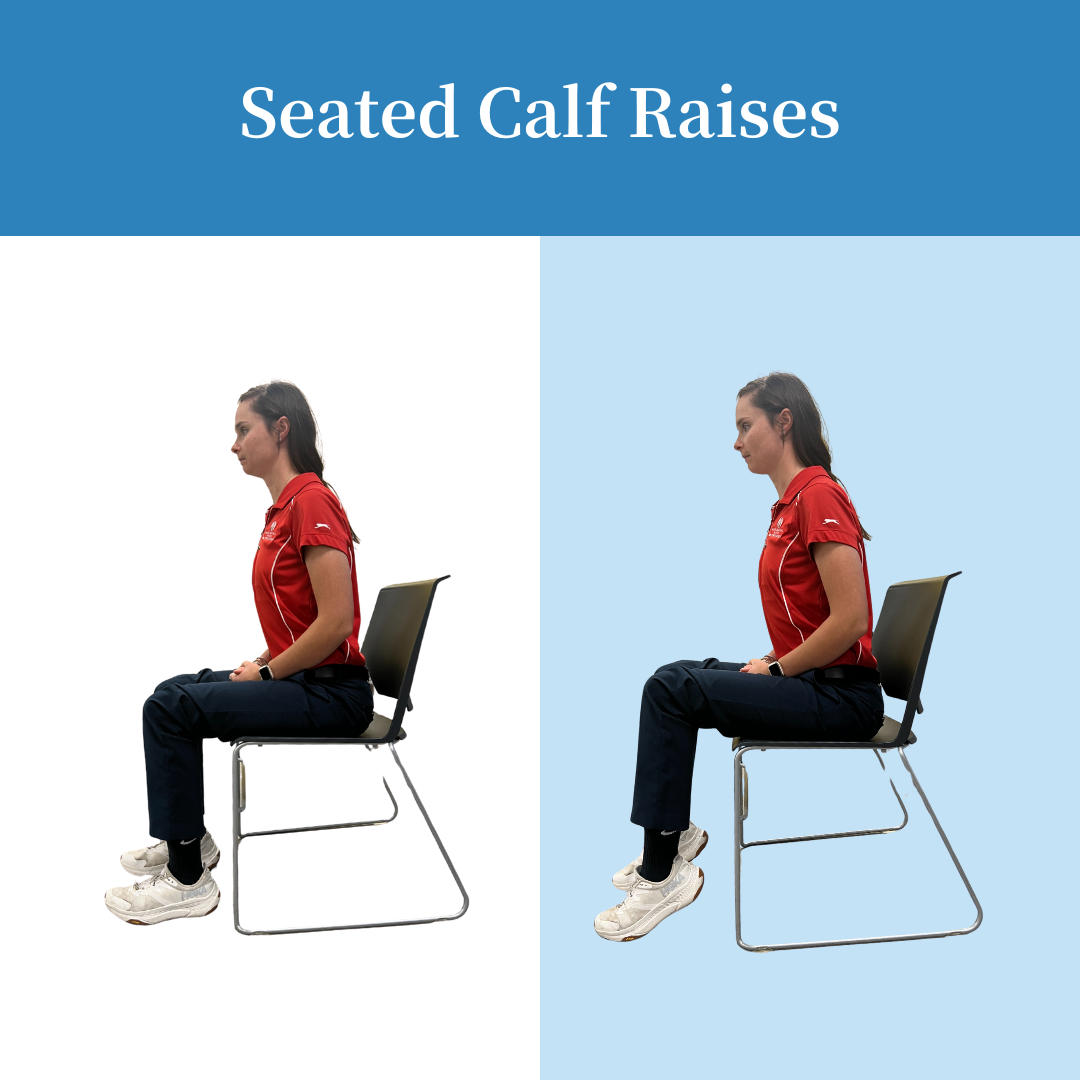
- Targets: Legs
- Instructions: Sit with feet flat on the floor. Lift both heels off the ground, pressing onto the balls of your feet, and squeeze your calves at the top. Lower your heels slowly back down.
Seated Chest Press

- Targets: Chest, arms and shoulders
- Instructions: Sit up straight with your elbow bent, hands at chest height. Push your hands forward as if pushing against resistance, extending your arms fully. Slowly return to the starting position, engaging the chest muscles.
The importance of movement
Movement is an important part of maintaining a healthy lifestyle and aging gracefully. Chair exercises are a wonderful way to exercise and build strength, whether temporarily or long-term.
If you are having any pain with exercise, we recommend consulting your primary care provider and/or working with a physical therapist.
Maury Regional Health offers physical therapy services to help you return to doing what you love across eight locations in Columbia, Spring Hill, Lewisburg, Chapel Hill, Pulaski, Hohenwald, Mount Pleasant and Waynesboro.
Learn more about Maury Regional Health’s eight therapy locations by visiting MauryRegional.com/Therapy.